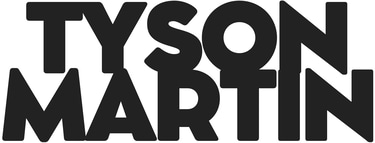The Forgotten Superpower:
What Children Know About Play That Adults Have Forgotten


The Forgotten Superpower: What Children Know About Play That Adults Have Forgotten
Imagine two children meeting for the first time.
One wears light-up sneakers. The other has a scraped knee and a popsicle-stained shirt. Neither knows the other’s name. They lock eyes, hesitate, then spot a ball in the grass. A smile forms. One runs toward it. The other follows. Within minutes, they’re playing tag, inventing new rules mid-sprint, solving disagreements with nothing more than a shrug or a laugh. In less than ten minutes, they’ve forged a bond more honest and resilient than many adults build in years of boardroom meetings.
No introductions. No LinkedIn profiles. No team-building seminars. Just play.
Play is the Shortcut to Connection
Children don’t ask for credentials before they trust each other. They create the future together through shared imagination. One sees a dragon. The other slays it. They build invisible castles, conduct moon missions from a jungle gym, and host dance parties in puddles. In their world, empathy isn’t taught—it’s felt. They recognize pain in a skinned elbow because they’ve had their own. They laugh together not because something is funny, but because someone else is laughing.
And while we often marvel at how quickly children make friends, we overlook the engine behind that speed: play.
Prepared Through Play: What Fire Drills Teach Us
Now shift the scene. The school bell rings three short blasts. The teacher stands calmly. “Okay, time for a fire drill.”
Children know what to do—not because they’ve memorized an emergency procedure, but because they’ve practiced. They’ve made it into a game. Line up. Stay quiet. Follow the leader. Stand at the designated spot. They’ve rehearsed safety like they rehearse recess: through rhythm, routine, and mild excitement.
This isn’t trivial. This is life-saving. Because when things go wrong—really wrong—children fall back on the memory of play. It’s how they learn to act before panic takes over.
Adults train through drills, too. But how often do we rehearse things with lightness or joy? How often do we prepare for the unexpected by simulating it, together, in safe environments built not just for rigor but also for resilience?
When children rehearse danger through play, they’re not just memorizing. They’re internalizing cooperation, shared purpose, and calm under pressure.
Imagine if our organizations did the same.
The Physics of Play: How Teams Unlock the Impossible
Every leader loves to say “teamwork makes the dream work,” but most corporate teams resemble a committee, not a crew on a mission.
Real teams—the great ones—operate like kids building a treehouse. Nobody’s calculating ROI on the hammer. They just want the ladder to reach the branch. Someone draws a blueprint in the dirt. Another grabs the wood. Someone else climbs and falls, then climbs again. And somehow, by dusk, the treehouse stands.
Play unlocks shared momentum. It invites failure, but makes it feel safe. It distributes leadership fluidly—whoever knows what to do next, does it. Play generates commitment not through authority, but through joy.
We see this in sports. In improv troupes. In elite military units. And, yes, in scrappy startups that move faster and think better than their bloated competitors. What do they all have in common? Play. The good kind. The kind where everyone is in it together.
So what happens to us?
We Forget to Play—and We Pay for It
Somewhere along the way—between report cards and resumes, between college applications and quarterly targets—we unlearned one of the most effective, unifying, and visionary tools humans have ever possessed.
We started calling play childish. We made work the opposite of fun. We began solving complex problems with spreadsheets instead of storylines. We turned curiosity into compliance.
And here’s the cost:
We struggle to innovate because we fear looking foolish.
We struggle to collaborate because we lack shared joy.
We struggle to adapt because we haven’t practiced failure safely.
We struggle to empathize because we forgot how to imagine ourselves in someone else’s shoes.
We didn’t lose a tactic. We lost a superpower.
The Case for Play in the Boardroom
Now imagine a corporate offsite—not the kind with PowerPoints and platitudes, but one where leaders play.
Not just icebreakers. Play. Team LEGO-style competitions. Strategic simulations. Story-driven scenarios where decisions change outcomes, and people can experiment without consequence. Picture the CISO and CFO laughing together while racing to solve a cybersecurity breach in a game—learning more in three hours than in three months of memos.
This isn’t fantasy. This is strategic rehearsal. And it works.
Here’s where play could change the game:
1. Revenue Generation
Play sharpens creativity. When sales and marketing teams “sandbox” new pitches, roleplay as customers, or gamify campaign design, they stop coloring inside the lines. They see opportunities nobody spotted before. Play can also breed urgency. Timed challenges fuel healthy competition. Story-based simulations train people to feel the stakes, not just calculate them.
A dull team might hit targets. A playful team redefines them.
2. Business Resilience
Cyberattacks. Supply chain disruptions. Brand controversies. These moments don’t reward the smartest team. They reward the most practiced one. Teams that simulate crisis through play—complete with shifting dynamics, time pressure, and unexpected curveballs—respond better when real chaos hits.
Fire drills taught us this when we were six. We just forgot.
3. Unexpected Adaptability
Play makes improvisation second nature. In the best simulations, the rules change mid-game. The objective shifts. The constraint tightens. And the team responds together. That skill—the art of collective adjustment—is gold in markets that change overnight.
4. Empathy Building
Want sales to understand product? Let them play as the product team in a simulation. Want the tech team to care about user experience? Have them play through the customer journey. Roleplay, storytelling, and interactive games aren’t fluff. They’re empathy factories.
5. Workplace Joy and Retention
Play brings levity. It doesn’t just retain customers. It retains people. Employees don’t leave because of too much pressure. They leave because of too little purpose. Play renews joy. Joy builds loyalty. Laughter isn’t a perk. It’s an indicator of health.
The Adult Problem With Play
There’s a catch, of course. Adults resist play.
Why?
Because play requires vulnerability. It means suspending the image you’ve worked hard to build. It means you might lose. You might look silly. You might feel something in a room where feelings are often muted.
But here’s the deeper truth: when we reject play, we don’t just reject fun. We reject trust. We reject the conditions under which real relationships form.
Children don’t bond through bios. They bond through blocks, balls, and make-believe. And it works
Adults could learn something from that.
The Future Is Built in Playgrounds
Look around. Our world is getting faster, scarier, more complex. We need imagination more than ever. We need cooperation without ego. Speed without panic. Empathy without training wheels.
That doesn’t come from compliance manuals. It comes from rehearsal. It comes from play.
Schools run fire drills. Sports teams run scrimmages. Musicians rehearse together. But most companies go straight to the performance—no warm-up, no practice, no safety net.
That’s why teams freeze during crises. That’s why big ideas die in meeting rooms. That’s why silos stay siloed.
Play could change that.
So, What If…?
What if every company had a “play lab”?
What if every board meeting began with five minutes of imagination?
What if every strategy session included a game to model its risks?
What if leadership teams ran fire drills for reputational risk or regulatory failure. Not ones with dread, but with curiosity and experimentation?
What if we treated corporate health like school safety?
You wouldn’t hand a child an evacuation map and expect them to survive a fire. You practice. You play it out. You make the unfamiliar feel familiar—before the alarm rings.
We need to do the same for the organizations we lead.
In the End, It’s Simple
Two kids met in a field.
They didn’t know each other.
Now they do.
Because they played.
The world needs more of that.
And it starts with us.
Reflection Prompt
When was the last time you laughed at work?
Not smiled politely. Not nodded along.
Laughed.
The kind of laugh that makes trust easier and work feel lighter.
That’s where the work begins.
Will you make space for it?
Bringing Play Back to Work
1. Run a Fire Drill for the Boardroom
Host a quarterly strategic simulation that mimics real-world crises—cyberattack, supply chain disruption, PR fallout. Use role-play and storytelling to practice not just what your team would do, but how they would think and communicate under pressure.
2. Launch a “Play Lab” Session
Dedicate one meeting per month to explore tough challenges through games, improv, or scenario planning. Rotate facilitators. Encourage laughter. Reward bold thinking. Watch ideas get unstuck.
3. Add Play to Onboarding
Create onboarding experiences that include collaborative challenges or storytelling missions. Let new hires bond through creative problem-solving, not just HR paperwork.
4. Use Role-Swapping to Build Empathy
Host quarterly “walk-a-mile” days. Let your engineers play customer support. Let sales shadow a product sprint. Use gamified challenges to foster respect and break down silos.
5. Pitch Your Next Strategy as a Story
Next time you’re selling a big idea—be it a product roadmap, transformation initiative, or budget ask—frame it as a narrative. Invite the team to “play it forward.” Map choices, risks, and alternate paths.
6. Introduce Micro-Play into Meetings
Start or close team meetings with a 5-minute creative challenge: a problem-solving game, a story continuation, or “what would you do if…” scenario. These build psychological safety and creativity over time.
7. Measure Joy Like a KPI
Add a question to pulse surveys: “When was the last time you laughed at work?” Track it. Trend it. Prioritize it. Joy is a productivity signal, not a distraction.
8. Partner With a Simulation Expert
Bring in an external facilitator or platform to guide your team through business simulations or custom strategy games. The best learning happens when stakes are low and engagement is high.
9. Invite a Child to Explain Collaboration
It may sound gimmicky, but try it: ask your team how children play, solve conflict, and co-create. Then ask: What would it look like if we actually tried that here?
10. Start Small—But Start Now
Pick one initiative this quarter where you’ll introduce structured play: a launch, a workshop, a team reset. Announce it. Explain the why. Measure the energy it unlocks.
Your culture already has rules, roles, and routines. What it might be missing is rehearsal. Play isn’t about adding silliness—it’s about building strength, trust, and vision together.
Strategy Is Too Important Not to Rehearse
We believe play is more than a lost art, it is an untapped advantage. It’s how teams connect better, how leaders rehearse risk, and how organizations build the muscle memory to respond with clarity when it matters most. That’s why we created SageSims: an interactive simulation platform designed to help organizations turn abstract strategy into shared experience. We built it for teams who want to prepare, not just present. For boards who want to debate real scenarios, not just skim risk registers. And for leaders who know that trust, empathy, and decisive action can’t be downloaded, they must be experienced together.
SageSims combines story-driven decision-making, realistic role play, and guided facilitation to create environments where teams can test their thinking, improve collaboration, and respond to challenges before they become headlines. Whether you’re planning for growth, navigating transformation, or preparing for the unexpected, SageSims lets you practice with purpose.
If you’re ready to shift your team from passive discussion to active alignment, book a discovery call, or contact us to bring SageSims into your next leadership session.
Play isn’t a distraction—it’s your next competitive edge.
